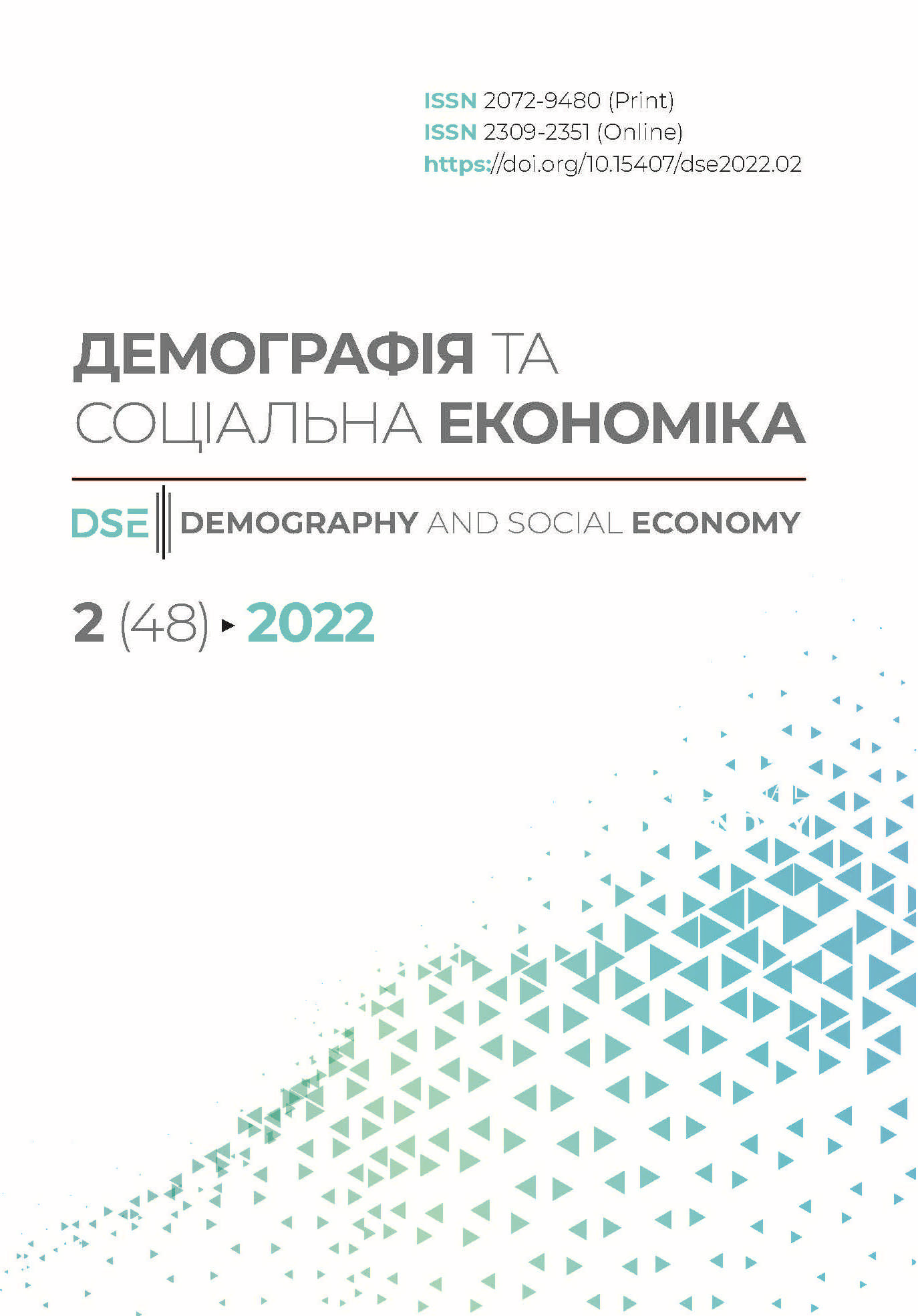AGE, PERIOD AND COHORT EFFECTS IN THE LONG-TERM DYNAMICS OF MORTALITY IN UKRAINE
DOI:
https://doi.org/10.15407/dse2022.02.003Keywords:
mortality, life expectancy, APC-analysis, age, period, cohort, probability of dying by ageAbstract
This study analyzes the effects of age, period, and birth cohorts on long-term mortality in Ukraine. For the first time, the APC model was used to analyze mortality in Ukraine for the 1850-2011 period and the cohorts born from 1850 to 1923. These estimations allow us to discriminate the impact of the historical and contemporary factors (at specific times) that could change the mortality rates. The following statistical methods are used: calculation of period and cohort death rates; age-period-birth cohort (APC) model that provides a method to assess the significance of the three interrelated factors (age, calendar period of death, and birth cohort) on mortality. As indicated by the results of APC analysis, the contribution of the period effect to the long-term mortality in Ukraine is likely to be larger than that of the cohort effect, and both effects are found to be more influential for men than for women. The analysis revealed intergenerational variations in death rates and inversion in cohort mortality when survival rates for the younger generations are worse than for the older generations. In particular, almost all generations born during the first half of the XX century had higher mortality rates than the reference cohort born in 1900, while lower mortality rates are found only for those born after 1945. At the same time, the overall decline in mortality among cohorts born after 1945 varied across different age groups: while death rates at the age 0 to 15 declined with each new generation, mortality in the 45 to 60 age group for younger generations tended to be higher than for older generations.
The cohorts born in 1915—1925 and especially in 1917—1921 appeared to be the most disadvantaged and the hardest affected in terms of survival. A comparative analysis of the probability of dying in large age intervals for different generations showed that, first, among the cohorts of adult men who participated in World War II, those born in 1915—1925 were the most affected; second, during the First World War, the Ukrainian Revolution of 1917—1921 and the famine of 1921—1923 young and middle-aged men born in 1880—1890 suffered the greatest losses whereas the highest mortality due to Holodomor of 1932—1933 was observed among children and adolescents, as well as older persons born in the 1870s.
REFERENCES
- Anderson, B. A., & Silver, B. D. (1989). Patterns of cohort mortality in the Soviet. Population and Development Review, 15 (3), 471-501. https://doi.org/10.2307/1972443
- Willekens, F., & Scherbov, S. (1991). Age-Period-Cohort (APC) Analysis of Mortality with Applications to Soviet Data. Working paper. WP-91-42. International Institute for Applied Systems Analysis A-2361 Laxenburg, Austria. November 1991. 55 p.
- Boleslawski, L. (1985). Differences in mortality between generations as a result of the world wars. Studia Demograficzne, 4/82, 51-71.
- Dinkel, R. H. (1985). The seeming paradox of increasing mortality in a highly industrialized nation: The example of the Soviet Union. Population Studies, 39, 87-97. https://doi.org/10.1080/0032472031000141296
- Caselli, G., Duchene, J., Egidi, V., Santini, S. & Wunsch, G. (1990). A matter of life and Methodologies for the life history analysis of adult mortality. Working Paper, 151. Institut de Demographie, Universite Catholique de Louvain. Louvain-la-Neuve.
- Kohler, I. (2007). Adult and old-age mortality dynamics in Bulgaria and Russia. University Press of Southern Denmark. 261 p.
- Shkolnikov, V. (2012). Health crisis and cohort mortality. / Mesle, F. & Vallin, J. (Eds.) Mortality and causes of deaths in XX-th century Ukraine. Springer, 109-120. https://doi.org/10.1007/978-94-007-2433-4_7
- Hirte, L., Nolte, E., Bain, C. & McKee, M. (2007). Breast cancer mortality in Russia and Ukraine 1963–2002: an age-period-cohort analysis. International Journal of Epidemiology, 36, 900-906. https://doi:10.1093/ije/dym066
- Shevchuk, P. E. (2015). Differentiation in cohort mortality in Ukraine. Population of Demographic components of human development. Uman, “Sochynskyi”, 66-77 [in Ukrainian].
- Levchuk, N. M. (2016). Long-Term Trends in Period and Cohort Life Expectancies in Ukraine. Demography and Social Economy, 1 (26), 80-92. https://doi: 10.15407/dse2016.01.08 [in Ukrainian].
- Wilmoth, J. R. (1990). Variation in Vital Rates by Age, Period, and Cohort. Sociological Methodology, 20, 295-335. https://doi.org/10.2307/271089
Downloads
Published
How to Cite
Issue
Section
License
Copyright (c) 2022 Наталія Левчук

This work is licensed under a Creative Commons Attribution-NonCommercial-NoDerivatives 4.0 International License.


